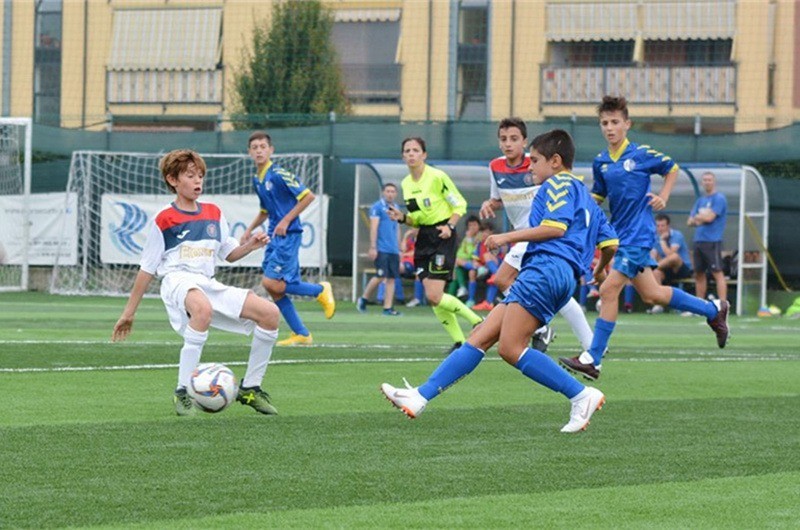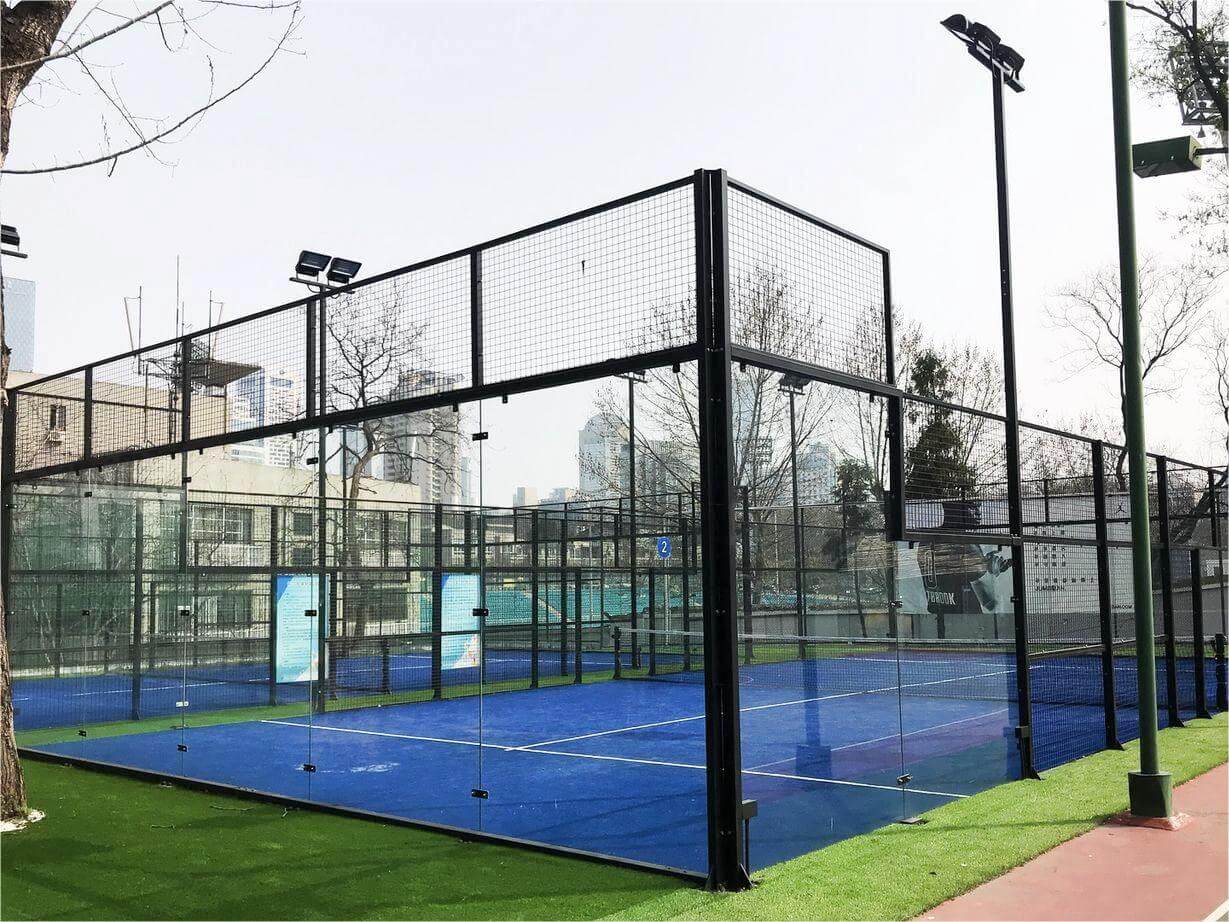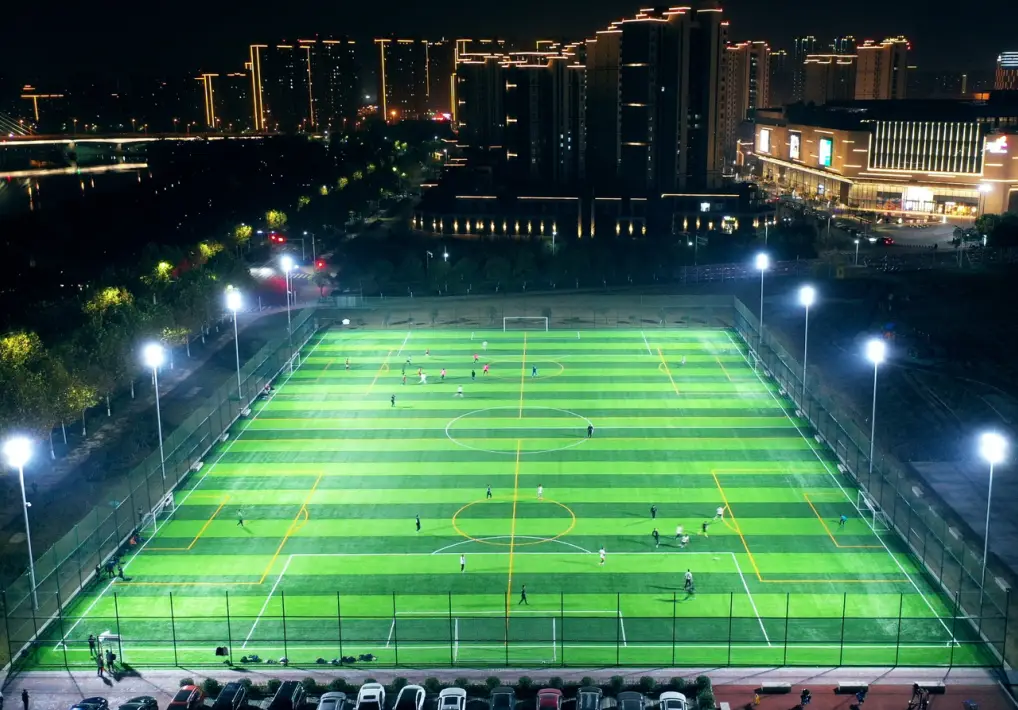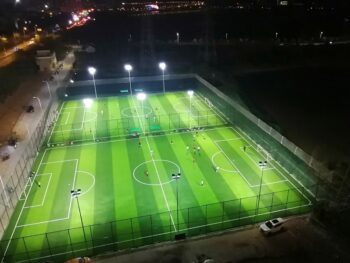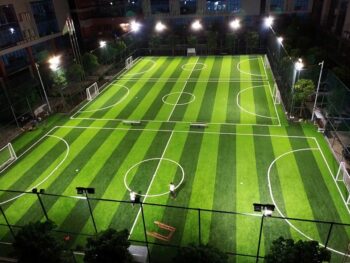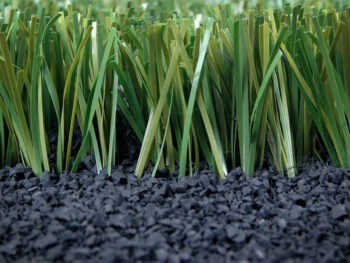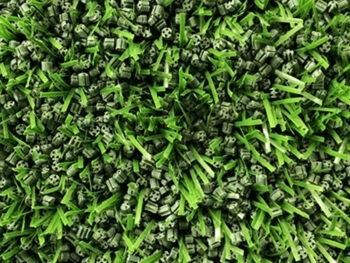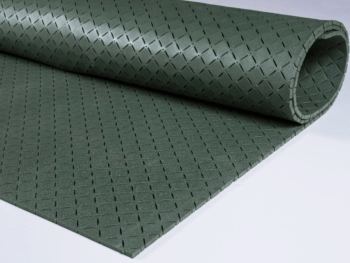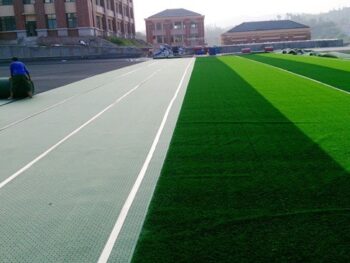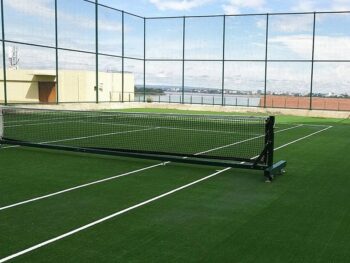When planning your sports facility, choosing the right lighting system is just as important as selecting quality artificial turf. Proper illumination ensures optimal performance, safety, and extended operational hours. Whether you’re developing a community soccer field, school sports complex, or multi-sport facility, this comprehensive guide will help you make informed lighting decisions that complement your artificial grass investment.
Table of Contents
⚡ Why Sports Field Lighting Matters
Sports facilities require carefully designed lighting systems to meet diverse operational needs. Players need consistent visibility for optimal performance, coaches require adequate illumination for effective instruction, and facilities benefit from extended operational hours. The right lighting system transforms your artificial turf field into a versatile, year-round sports asset that can accommodate various activities and skill levels.
🔧 Key Lighting Considerations for Sports Fields
1. Optimal Light Levels for Different Applications
Sports facilities require appropriate illumination levels based on their intended use:
- Recreational activities: 150-200 lux
- Training and skill development: 200-300 lux
- Competitive events: 300-500 lux
- Broadcast-quality events: 800+ lux
These levels ensure appropriate visibility for different activities while managing energy costs effectively. When paired with high-quality artificial turf, these light levels create optimal playing conditions across various sports and skill levels.
2. Strategic Fixture Placement and Pole Configuration
Pole Height Recommendations:
- Small fields (basketball/volleyball courts): 20-25 feet
- Medium fields (soccer training areas): 30-40 feet
- Large multi-sport fields: 40-50 feet
Layout Principles:
- Position poles outside the playing area to prevent interference
- Use 4-6 poles for rectangular fields to minimize shadows
- Consider prevailing wind directions for pole stability
- Plan for future expansion or sport modifications
3. LED Technology for Sports Fields
Modern LED fixtures offer significant advantages over traditional lighting solutions:
Luminous Output: Select fixtures producing 20,000-50,000 lumens each based on your facility’s requirements. This range accommodates everything from recreational use to competitive events.
Color Temperature: 4000K-5000K delivers crisp, white light that enhances visibility on both natural and artificial grass surfaces. This temperature range reduces eye strain during extended training sessions.
Color Rendering Index (CRI): Select fixtures with CRI ratings of 70+ to ensure accurate color perception, helping players distinguish between team colors and equipment.
4. Glare Control and Visual Comfort
Sports field lighting should prioritize visual comfort for all users:
- Install fixtures with built-in glare shields
- Use asymmetric light distribution to direct light downward
- Position lights to minimize direct viewing angles
- Consider anti-glare coatings, especially important for artificial turf fields where surface reflection can be more pronounced
5. Energy Efficiency and Operating Costs
Modern sports facilities require energy-efficient solutions to manage operational costs:
LED Advantages:
- 50-70% less energy consumption than metal halide alternatives
- 50,000+ hour lifespan reduces maintenance costs
- Instant on/off capability for flexible scheduling
- Dimming capabilities for different training intensities
Smart Controls:
- Programmable timers for automatic operation
- Motion sensors for security lighting between sessions
- Dimming systems to adjust brightness based on activity type
6. Weather Resistance and Durability
Sports facilities operate in all conditions, requiring robust lighting systems:
- IP65 rating minimum for weather protection
- Corrosion-resistant materials for coastal or humid environments
- Wind load certification appropriate for your geographic region
- Temperature range compatibility for year-round operation
🌱 Complete Sports Field Solutions
When developing a sports facility, coordinating artificial turf and lighting installations offers significant advantages:
Enhanced Performance: Quality artificial turf provides a consistent playing surface that performs optimally under proper lighting conditions, eliminating issues with mud and uneven natural grass that can affect visibility.
Maintenance Synergy: Both LED lighting and artificial turf require minimal maintenance, creating a low-maintenance facility that maximizes operational efficiency.
Project Coordination: Working with suppliers who provide both artificial turf and lighting solutions can streamline project management, reduce costs, and minimize site disruption.
Aesthetic Consistency: Modern LED fixtures complement the clean, professional appearance of artificial turf fields, creating a cohesive facility design.
💰 Cost-Effective Lighting Solutions
Sports facilities can achieve professional lighting results through strategic planning and smart investment decisions:
Phased Installation
- Start with basic illumination and upgrade over time
- Install conduit and foundations for future expansion
- Begin with fewer fixtures and add as usage grows
Flexible Fixture Selection
- Choose fixtures that can be repositioned as needs change
- Select systems compatible with different mounting heights
- Opt for modular designs that allow easy upgrades
Shared Infrastructure
- Use common electrical systems for multiple fields
- Consider centralized control systems for facility-wide management
- Plan for shared maintenance and replacement schedules
🔨 Maintenance and Longevity
Modern LED sports lighting requires minimal maintenance when properly selected:
Routine Care:
- Annual fixture cleaning to maintain light output
- Periodic electrical connection inspection
- Vegetation management around pole bases
Long-term Planning:
- LED fixtures typically last 10-15 years
- Plan replacement schedules to maintain consistent performance
- Keep spare fixtures for critical training periods
✅ Making the Right Choice for Your Facility
Selecting appropriate lighting for practice fields involves balancing performance, cost, and operational needs. Consider these factors:
- Primary sports and usage patterns
- Local climate and environmental conditions
- Electrical infrastructure and utility costs
- Future expansion plans
- Integration with existing artificial turf or planned installations
👨🔧 Professional Installation and Support
Proper design and installation ensure optimal performance, safety, and regulatory compliance. Work with experienced suppliers who understand sports facility requirements and can provide comprehensive solutions including both artificial turf and lighting systems for seamless project delivery.
🎯 Conclusion
Investing in quality lighting transforms your sports field into a versatile, safe, and efficient facility that serves multiple purposes. When combined with high-quality artificial turf, proper illumination extends facility usage, enhances performance, and creates a professional atmosphere that athletes and spectators appreciate.
The key to successful sports field lighting lies in understanding your specific requirements, selecting appropriate technology, and planning for long-term operation. By focusing on these fundamentals, you’ll create a lighting system that serves your facility effectively for years to come.
Ready to illuminate your sports field? As a leading artificial turf manufacturer, we also provide comprehensive sports lighting solutions to deliver complete facility packages. We work with trusted lighting partners to offer cost-effective systems that perfectly complement our artificial turf products. Contact us today to discuss your project requirements and receive a customized proposal for both turf and lighting solutions.
For technical specifications, installation guidelines, or project consultation, reach out to our sports facility specialists who can help you create the perfect sporting environment with our complete range of artificial turf and lighting products.

